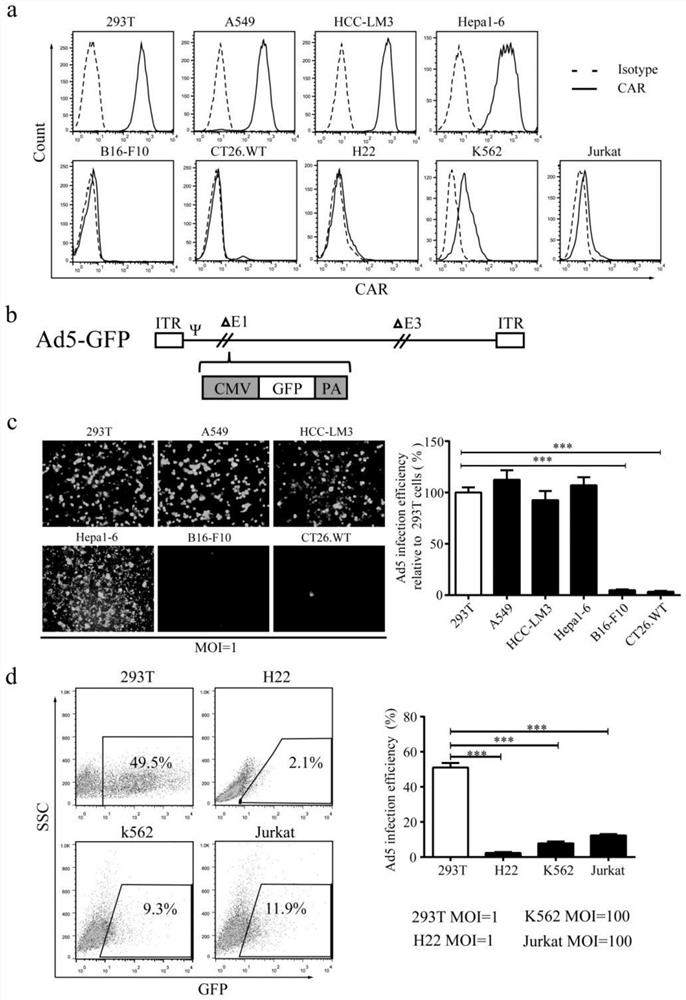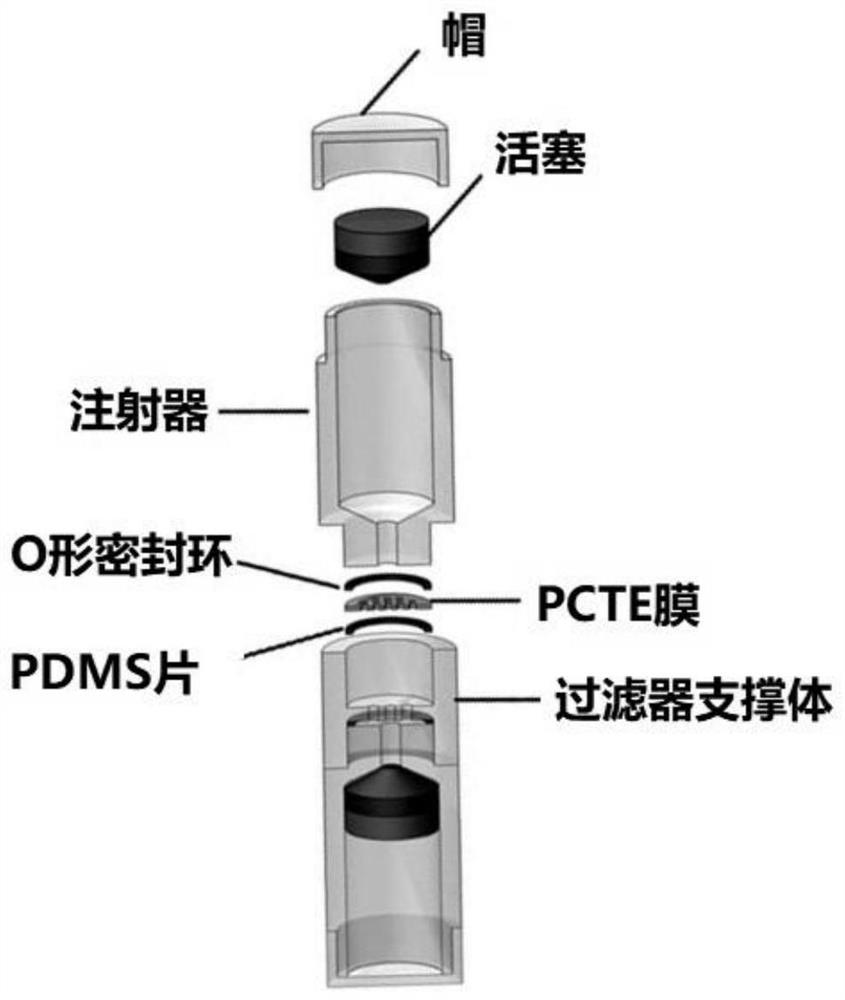Method for preparing novel oncolytic virus EM/VSV-G Ad5sPVRCD137L
A VSV-G, 293T-VSV-G technology, applied in the field of oncolytic virus preparation, can solve the problem of low natural exosome production
- Summary
- Abstract
- Description
- Claims
- Application Information
AI Technical Summary
Problems solved by technology
Method used
Image
Examples
Embodiment 1
[0069] Example 1 Infection efficiency of adenovirus Ad5 to cells with low CAR expression is low
[0070] CAR (the coxsackie and adenovirus receptor) is the main receptor of adenovirus Ad5 infected cells. Early studies have demonstrated that adenovirus Ad5 has low infection efficiency for cells with low CAR expression. 13,19 We found that the fluorescence intensity of 293T, A549, HCC-LM3 and Hepa1-6 cells stained with anti-CAR-PE was significantly increased compared with the isotype treatment group by flow cytometric analysis, indicating that 293T, A549, HCC-LM3 and Hepa1-6 High expression of CAR on the cell surface ( figure 1 a); while the surface of B16-F10, CT26.WT and H22 cells were stained with CAR antibody, there was no significant change in fluorescence intensity compared with the isotype treatment group; indicating that these cell lines do not express CAR; while K562 and Jurkat cells were stained with CAR antibody After that, compared with the isotype treatment group,...
Embodiment 2
[0072] Example 2 Vesicle-like technology used to prepare novel oncolytic virus EM / VSV-GAd5sPVRCD137L with VSV-G
[0073] Vesicular stomatitis Indiana virus G protein (VSV-G) is capable of mediating viral entry into all cell types tested so far and is widely used in gene transduction and gene therapy 26 . This study hopes to use vesicle-like technology to take advantage of the broad tropism of VSV-G on cells to realize the retargeting of Ad5 and increase the infection efficiency of Ad5 on cell lines with low CAR expression.
[0074] First, we constructed 293T cells expressing VSV-G (293T-VSV-G), infected 293T-VSV-G cells with Ad5sPVRCD137L at an MOI of 5, and collected cells after culturing at 37°C for 72 hours. The collected cells were divided into two parts, and one part was used After freezing and thawing 3 times in the traditional protocol, the virus was purified by density gradient centrifugation with iodixanol; the other part produced a new oncolytic virus EM / VSV-G Ad5sP...
Embodiment 3
[0080] Example 3 EM / VSV-G Ad5sPVRCD137L prepared by EM / VSV-G technology has higher infection efficiency, ability to express and secrete soluble PVRCD137L and oncolytic ability in vitro
[0081] The oncolytic adenovirus Ad5sPVRCD137L is an oncolytic adenovirus Ad5 expressing soluble PVRCD137L (named Ad5sPVRCD137L), and the genome structure of the oncolytic adenovirus Ad5sPVRCD137L is shown in image 3 shown. The low infection rate of oncolytic adenovirus Ad5sPVRCD137L to tumor types with low CAR expression severely limits the transformational application of Ad5sPVRCD137L. We applied EM / VSV-G technology to oncolytic adenovirus Ad5sPVRCD137L, expecting to significantly increase the infection efficiency of CAR low-expressing tumor cell lines through EM / VSV-G technology, and improve the therapeutic effect and expansion of oncolytic adenovirus Ad5sPVRCD137L its scope of application. The virus prepared by the oncolytic adenovirus Ad5sPVRCD137L through EM / VSV-G technology is named E...
PUM
| Property | Measurement | Unit |
|---|---|---|
| Diameter | aaaaa | aaaaa |
Abstract
Description
Claims
Application Information
 Login to View More
Login to View More - Generate Ideas
- Intellectual Property
- Life Sciences
- Materials
- Tech Scout
- Unparalleled Data Quality
- Higher Quality Content
- 60% Fewer Hallucinations
Browse by: Latest US Patents, China's latest patents, Technical Efficacy Thesaurus, Application Domain, Technology Topic, Popular Technical Reports.
© 2025 PatSnap. All rights reserved.Legal|Privacy policy|Modern Slavery Act Transparency Statement|Sitemap|About US| Contact US: help@patsnap.com



